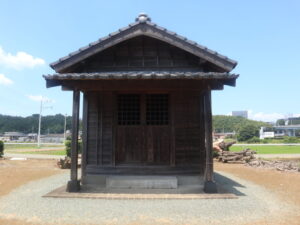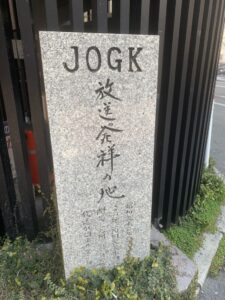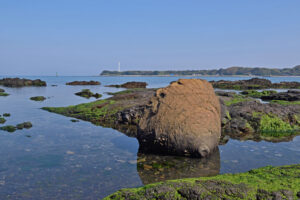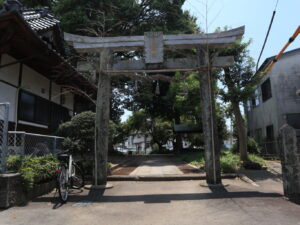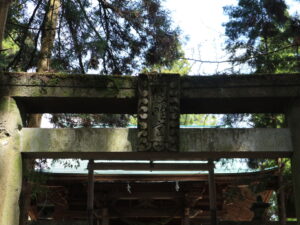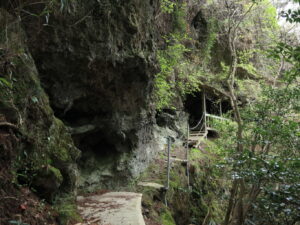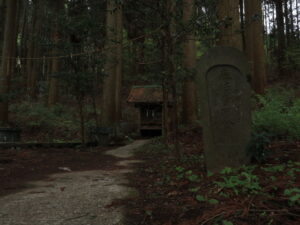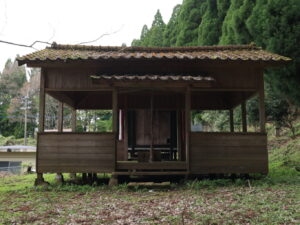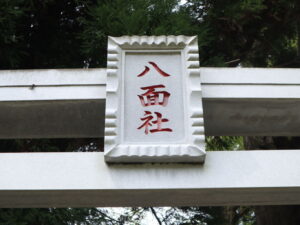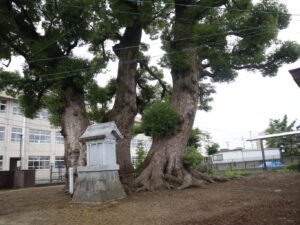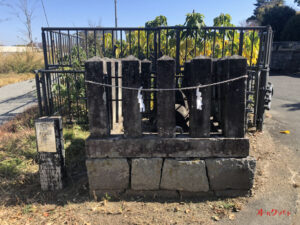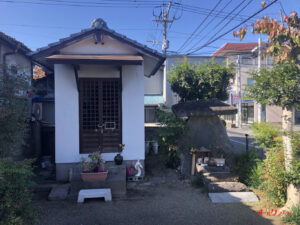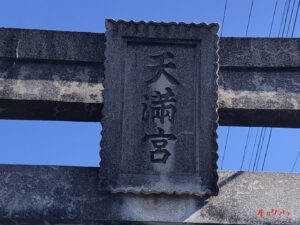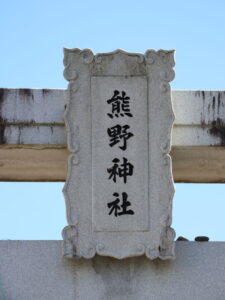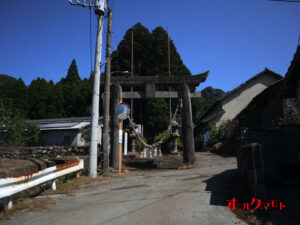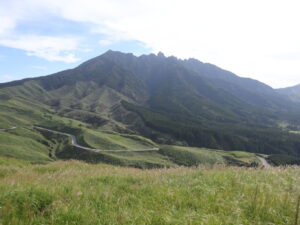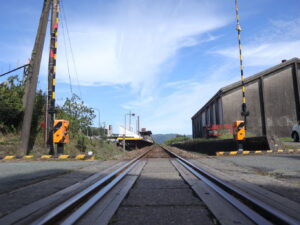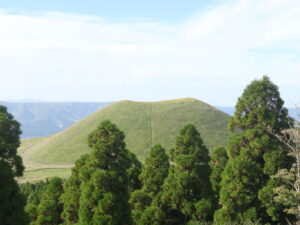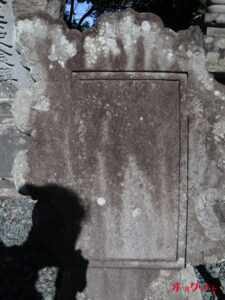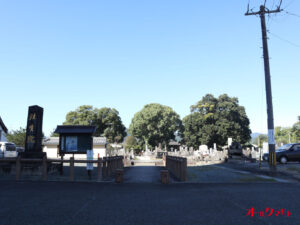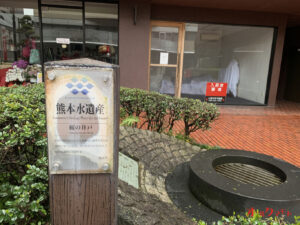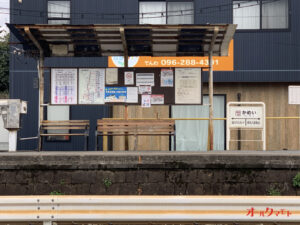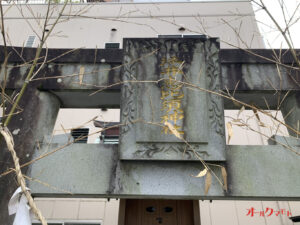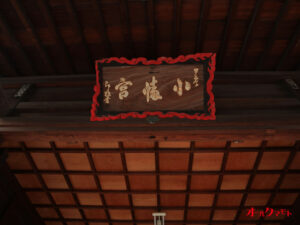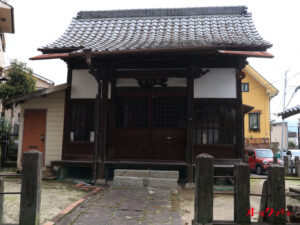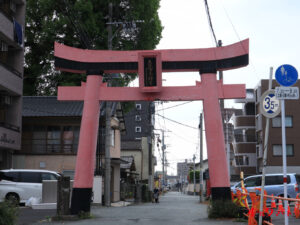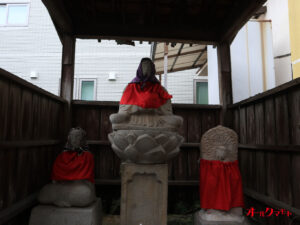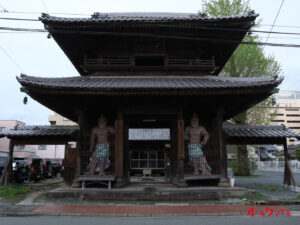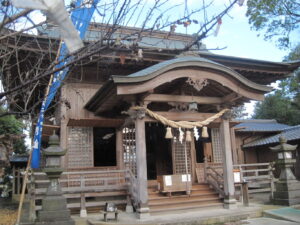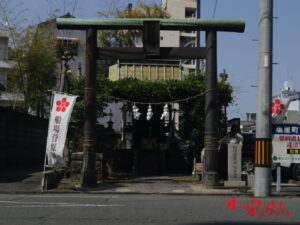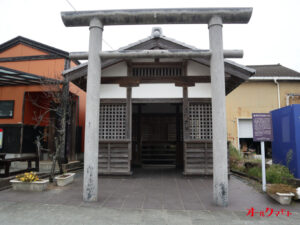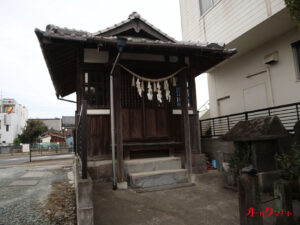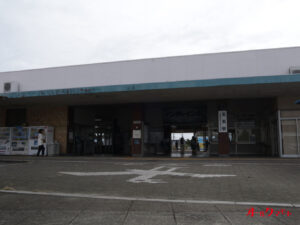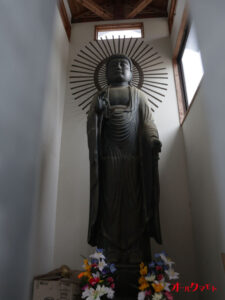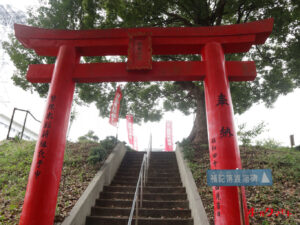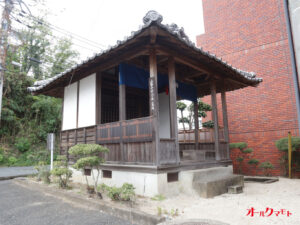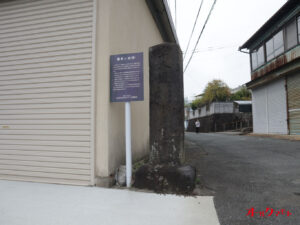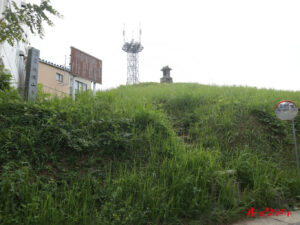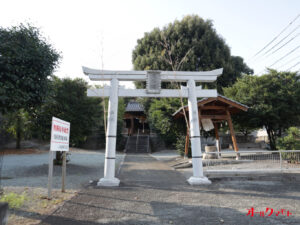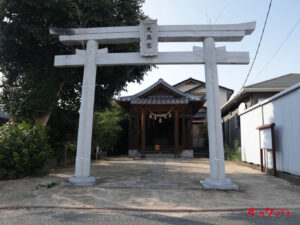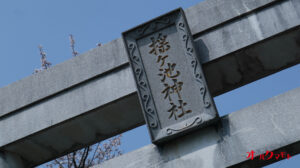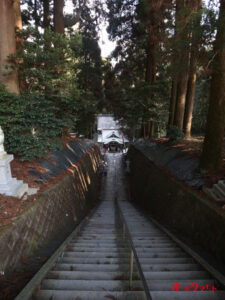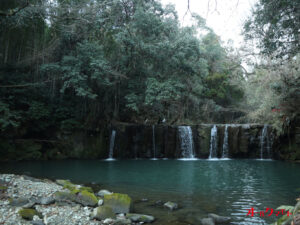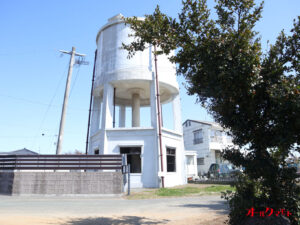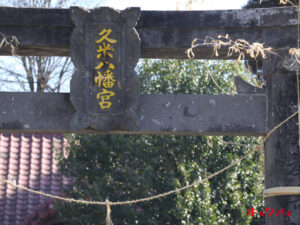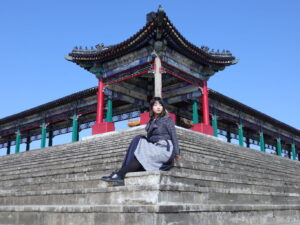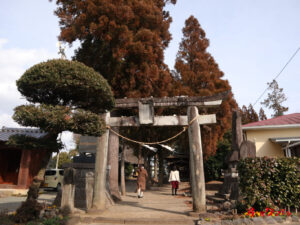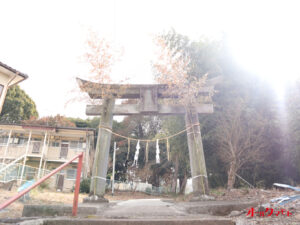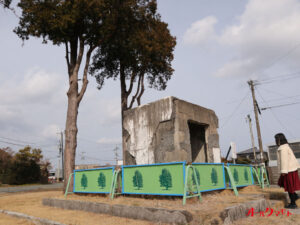Nakae Tenmangu Shrine (Higashi Ward, Kumamoto City)
Nakae Tenmangu Shrine is located in Nakae-cho, Higashi-ku. The shrine is located right next to the Yuge Ohashi Bridge (up and down) on the East Bypass of National Route 57, which spans the river terrace of the Shirakawa River. As the shrine is called Tenmangu Shrine, it is thought to be dedicated to Sugawara Michizane. The shrine is surrounded by rice paddies, irrigation canals, and nearby [...].
BIRTHPLACE OF JOGK BROADCASTING
DESCRIBES THE BIRTHPLACE OF JOKG BROADCASTING. IT ALSO INTRODUCES HOW TO ACCESS THE SITE.
Oppai Iwa (Poria Town)
Amakusa Tourism] "Oppai Iwa" is a power spot for marriage and childbirth. The shape of the rock, which resembles a woman's breast created by nature, is breathtaking! It appears at low tide, so check the tide table for the best time to visit.
Shinnanbu Sugawara Shrine (Higashi Ward, Kumamoto City)
Sugawara Shrine, located behind McDonald's on the East Bypass, is an anomalous shrine in that its first deity is Amaterasu. The shrine is revered by the neighborhood and the grounds are well maintained.
Shikimi Kumanoza Shrine (Takamorimachi)
Shikomi-Kumanoza Shrine is a historic shrine located in Shikomi, Takamori-cho, Aso-gun, Kumamoto Prefecture. It is known as one of the four major Kumanoza shrines in Takamori-cho and is as important as Kamishikami Kumanoza Shrine. Access to Shikimi Kumanoza Shrine Shikimi Kumanoza Shrine Description Board and Statement of Reason Founded in [...].
Mt. Shakudo Rohan (Takamori Town)
Mt. Rohan is part of the outer rim of Minami-aso. There are wind holes in the rock walls here, where statues of arhats are enshrined. If you enter casually, you may get injured, so please be prepared to "climb the mountain" in your own way. There are steep and slippery sections along the way, and the path is narrow.
Kakumiya (Tsunomiya) Takamorimachi
Kakumiya (Tsu no Miya) is a water god located on the banks of Bessho Pond in Takamori-cho. Access to Kakumiya (Tsu no Miya) About Kakumiya (Tsu no Miya) The details of its foundation are unknown. Probably, water has been gushing out of the shrine since ancient times, and this water has been used for agriculture and daily life, and what [...]...
Takamori Takahashi Inari Shrine (Takamorimachi)
This Inari Shrine is located near Bessho Pond at the foot of the outer rim of the too peaceful Minami-Aso Takamori, along with the Tsu no Miya Shrine, which is said to be a water god. Within the shrine grounds are Daikoku-sama, a small shrine that appears to be a regent shrine, and a monument of some kind. Access to Takamori Takahashi Inari Shrine The origin of Takamori Inari Shrine and other [...].
Hachimen Shrine / Ichishita Shrine (Minamiaso Village)
This shrine is located in Minamiaso Village. Viewed from afar, you may enjoy a Ghibli-like atmosphere. The charm of this shrine is its lovely appearance in the open countryside. The flat plaque says "Hachimen-sha," the one called "Ichishita-jinja" (Shrine under the city). There is no information board or anything like that, so the detailed origin is unknown [...].
Kamesaka Shrine (Minami-ku, Kumamoto City)
Kamesaka Shrine is said to be the Mimegi Shrine, where the maidservants of Mimegi Gozen are enshrined. Anyway, it is a small, small shrine with three large camphor trees as sacred trees. The shrine sits as if it were watching over Rikiai Elementary School, but that is not why it is there. Access to Kamesaka Shrine [...].
Watarika-weir, Oide (Kumamoto City, Chuo Ku)
Watarika-weir is amazing. It was not just a spot for its scenery, but a place where one could really feel the precision of Lord Kiyomasa Kato's town planning.
This historic weir has played an important role in choking off the flow of the Shirakawa River and supplying water to the Kumamoto Plain. Its distinctive feature is its shape, which juts out at an angle to the river, which shows the high level of advanced civil engineering technology of the time. Whenever it was damaged by floods or confidence, it was repaired, and even today, it continues to supply water for agriculture and other functions. It is easy to see why Lord Kiyomasa became a god. It is such a relic.
Watarika Kannondo (Chuo-ku, Kumamoto City)
Watarika Kannondo thought to be administered by the Mizushima Shrine/Watarika Sugawara Shrine Access to Watarika Kannondo Not sure about Watarika Kannondo
Watarika Sugawara Shrine / Mizubu Shrine (Kumamoto City)
This shrine enshrines the deity that protects the Watarika weir, a water intake weir for the irrigation channel from the Shirakawa River to the direction of Tage and Deinakama, and Sugawara no Michizane. The priest mentioned in the history book seems to be in charge of Watarika Kannondo and Watarika no Nenne Shrine as well. Watarika Sugawara Shrine / Access to the Suimu Shrine Watarika Sugawara Shrine [...].
Kumano Shrine (Chuo-ku, Kumamoto City)
Kumano Shrine: Mysterious shrine in Oe, Chuo-ku, Kumamoto City, thought to have been a forest 70 years ago.
Murayama Grandmother Shrine (Takamorimachi)
Murayama Grandmother Shrine in Takamorimachi, Kumamoto Prefecture, is a historic shrine built in 927. The main deity is Asotsuhime-no-Mikoto, and hundreds of year-old cedar and ginkgo trees adorn the shrine grounds. It is a power spot where visitors can feel tranquility and history in the midst of magnificent nature.
Hakouseki Pass (observation point)
Hakousekitoge in Aso, Kumamoto Prefecture, is a spectacular spot where you can enjoy a panoramic view of the majestic Aso Gogaku (Five Aso Mountains). As you ascend the winding road, the scenery unfolds like a painting. It is very popular among motorcycle riders and photography enthusiasts! This is a superb driving course where you can fully enjoy the beauty of nature in each of the four seasons. This is one of the places you should definitely visit when sightseeing in Aso.
Ikoi no Mura Station
The area surrounding the station is rich in nature, green and quiet. When you get off the train, there is a peaceful atmosphere that makes you forget the hustle and bustle of the city. Although the station is unmanned, there is a convenience store within walking distance, so it is a good place to enjoy your trip while getting off the train [...].
Yonezuka (Aso City)
Yonezuka, a beautiful cone-shaped mountain in Aso, Kumamoto Prefecture, looks like an upturned rice bowl. It is a work of nature's art created by volcanic activity about 3,300 years ago. Visitors can enjoy the magnificent scenery and mysterious atmosphere.
Iwatate Sugawara Shrine (Nishi-ku, Kumamoto City)
I would love to know what kind of shrine Iwatate Sugawara Shrine is. Iwatate, Iwadate? I can't even begin to read. On the west-facing approach to the shrine, there are the remains of a torii gate and a broken flat plaque. It was probably damaged by the Kumamoto earthquake. Also, Sarutahiko and other deities are enshrined on the side of the approach. Corona [...].
Oujoin Temple (Nishi-ku, Kumamoto City)
800 years of history at Ojoyoin Temple Ojoyoin is a temple of the Jodo sect located in Ikeda, Nishi-ku, Kumamoto City. Its history dates back to 1228, when Bencho, a disciple of Honen Shonin, opened Shirakawa-san Ousho-in Temple in Shirakawa. After several relocations, it fell into its present location [...].
Cherry Blossom Well (Chuo-ku, Kumamoto City)
Sakura-no-Ido is a well located on Sakurai-dori. Access to Sakura-no-Ido About Sakura-no-Ido Kiyomasa Kato built Sakura-no-Ido wells at key locations around the castle in preparation for emergencies. This well in front of Kamidori Central Heights is one of them. The water from the surrounding wells is considered ideal for the tea [...].
Kamei Station (Kita-ku, Kumamoto City)
Kamei Station is a station on the Kumamoto Dentetsu Kikuchi Line. It is an unmanned station with no station building, but it was quite quaint. Access to Kamei Station About Kamei Station Kamei Station was opened in 1913.The number of passengers per day was 402 in 2018. It is believed that the number is much lower now [...].
Tsuboi Ebisu Shrine
There is a shrine that is often overlooked if you are in a daze when walking from Kamidori up Namikizaka to Hiromachi and then to Shinai Jogakuin. Access to Tsuboi Ebisu Shrine Origin of Tsuboi Ebisu Shrine Tsuboi Ebisu Shrine This area was part of the old Shintsuboi area, and in 1691 [...].
Oban Hachimangu shrine
Koban Hachimangu Shrine is located in Kogai Honmachi. The shrine is written "Oban Shrine" on the oblong plaque of the torii gate and "Oban Shrine" on the plaque of the hall of worship. There is a monthly parking lot within the shrine grounds, and several shrines and other facilities are scattered around the grounds. Access to Oban Hachimangu Shrine About Oban Hachimangu Shrine The founding of [...].
Vaisravana (guardian god of Buddhism)
Bishamondō Hall is located in Kuroshige. Access to Bishamondō Hall About Bishamondō Hall This hall is generally dedicated to Bishamonten, one of the seven gods of good fortune. History of Bishamondō Hall Year Month Event
Tachitaguchi Grand Shrine
KNOWN AS SHINMEISHA (AMATERASU OMIKAMI) BEFORE THE NANBOKUCHO PERIOD, IT WAS RENAMED "TACHITAGUCHI GRAND SHRINE" IN THE EDO PERIOD (1603-1868). THIS RED TORII GATE FACING TATEMACHI-DORI WAS A GOOD GUIDEPOST FOR TRAVELING TO THE NORTHERN PART OF HIGO. INCIDENTALLY, IT IS SEPARATED FROM JR TACHIDAGUCHI STATION BY [...].
Tsuboi 4-chome Hall
There are about three halls nestled together in Tsuboi 4-chome. I have no idea whether they are Kannon, Amida, or Jizo halls. Is it related to the Tachitaguchi Grand Shrine directly behind it? Access to the hall in Tsuboi 4-chome Gallery History Year Month Event
Shofukuji Temple, Niou-san
Hachiman-Shofukuji Temple is a Shingon sect temple that was relocated from Kokura and built in 1632 to pray for the safety of the Hosokawa family. Since the temple was built on the site of an old temple from the Muromachi period (1336-1573), historical structures such as the pagoda of Rokujizo and a wooden tablet from that period still remain. This temple was a place of prayer for the Hosokawa [...].
Ukishima Kumanoza Shrine (Kashima Town)
About Ukishima Kumano Za-jinja Shrine In 1001, the third generation of the Iou family, Iou Saburo Naohisa, who ruled this area during the Heian period (794-1185), had a poor harvest of grain due to the marshy area. Therefore, he prayed day and night to Kumano Gongen, the god of the house, and [...]...
Senba Sugawara Shrine (Chuo-ku, Kumamoto City)
Semba Sugawara Shrine is located in Shinmachi, the castle town of Kumamoto Castle. The shrine is known as the god of learning and is associated with the legend of "Senba-yama no tanuki" (the raccoon dog of Senba-yama).
Zocho Tenjin (Tamana City)
The shrine is located in downtown Takase, Tamana City. It is one of the seven commonly known Takase Tenjin shrines. Access to Zoumachi Tenjin About Zoumachi Tenjin Zoumachi Tenjin is one of the seven commonly known Takase Tenjin. On the map of Takase-cho dated Kaei 7 (Ansei 1, 1854), it is shown from east to west as Tenmacho, Uramachi (Uoyamachi), Hon [...].
Shimodori Higashi Tenjin (Tamana City)
All I know is that it is one of the seven Takase Tenjin shrines and that it enshrines Sugawara Michizane. If you know more details, please tell us more about it. Access to Shimodori Higashi Tenjin
Tamana Station
Introduction: Tamana Station, the Gateway to Kyushu Tamana Station is located in the midwestern part of Kumamoto Prefecture and is an important station on the Kagoshima Main Line. It is a fascinating station that combines an ancient history with its role as a modern-day transportation hub. This article describes the history of Tamana Station from its opening to the present, [...].
Yomizaka Casting Standing Amida Nyorai (Tamana City)
Access to Yomizaka Foundry Standing Amida Nyorai Statue About the Standing Amida Nyorai Statue The Standing Amida Nyorai Statue at the Yomizaka Foundry was moved from its original location about 200 meters from here to its current location in Yomizaka, and has been called "Yomizaka no Kurobotoke-san" for a long time.
Shiganegi Inari Shrine, Inariyama Burial Mound, and the Fudaraki-Tokai Monument (Tamana City)
Shiganegi Inari Shrine in Tamana City. Do you know ⛩️? It's a historic shrine built on top of an ancient burial mound! It has a stone monument, which is rare in Japan, so it's a great place for history buffs.
Ruins of Jufukuji Temple (Tamana City)
Jufukuji Temple was once a prosperous temple, but was devastated by warfare during the Warring States Period. Excavations have unearthed Buddhist ritual utensils and ceramics from underground mines, indicating the prosperity of the temple at that time. Although no remains of the building remain today, it is an important place in the history of the area.
Military Road (monument) Tamana City
Since commuting by train to Tamana Junior High School was inconvenient, the local military association built a military road with the labor of the villagers.
Denzayama Tumulus (Tamana City)
Access to Denzayama Kofun Outline of Denzayama Kofun On the plateau on the right bank of the Shigenegi River. It is a round burial mound built near the southern edge. Currently, it is approximately 35 meters in diameter and 5 meters high. The shape of the burial mound is a front-rear round burial mound with the front part on the west or south side (National Route 208 side).
Yatanda Tenmangu Shrine (in Kyoto)
The temple grounds include a new torii gate, guardian dogs, and lanterns, all made of stone. It is located on the downhill slope from the main gate of Komasa West Elementary School. The shrine is said to be a branch of Nagamine Aso Shrine. It is said that the shrine took shape about 200 years ago. However, it is a type of shrine that is found in everyday life. I think it must have played its role as a community of local people, rather than as a mysterious place deep in the mountains. I would like to introduce such a Yatanda Tenmangu Shrine.
Geyotanda Tenmangu Shrine (Higashi Ward, Kumamoto City)
Access to Ye Ye Hattanda Tenmangu Shrine Explanatory note and statement of reasons for Ye Hattanda Tenmangu Shrine In the age of the gods, Susano-no-mikoto gave this shrine to the people living in this area with the wish that their abundant life, happiness, peace of mind, development, and prosperity would continue forever. [...].
Yurigaike Shrine (Nishihara Village)
It was in the nature near Moe-no-sato. Legend has it that the name of the shrine became well known not only in Japan but also abroad after a local resident was cured of a footache that had troubled him with water from this shrine, although the water dried up after the Kumamoto earthquake. Today, the shrine enshrines two deities, Lord Nojin and Benzaiten.
Mr. Akaishi (Kikuchi City)
A small shrine near Kume Hachiman Shrine in Kikuchi. It's in front of a private house. What is it? Can you tell me?
Kusabe Yoshimi Shrine (Takamorimachi)
He is the ojiki of Kenbanryu-no-Mikoto, the main deity of Aso Shrine, and his father-in-law (his wife's father). This god, who is called Kuroryujin if he is Kusabe Yoshimijin, is called Hichiko-Yatsui no Mikoto, and he is the eldest son of Emperor Jinmu. Kenbanryu-no-Mikoto landed in Miyazaki from Kyoto, and here he was united with Asotsuhime, who would go on to establish himself in the Aso Valley
Kikuchi Airfield Museum and Surrounding War Remains (Kikuchi City)
ACCESS TO THE KIKUCHI AIRFIELD MUSEUM THE KIKUCHI AIRFIELD MUSEUM IS ABOUT AN HOUR DRIVE FROM KUMAMOTO CITY. IF YOU USE PUBLIC TRANSPORTATION, TAKE A BUS FROM JR KUMAMOTO STATION TO KIKUCHI CITY, AND THEN TRANSFER TO A BUS BOUND FOR SABI TOWN, WHICH TAKES ABOUT 20 MINUTES [...].
Kume Hachimangu (Kikuchi City)
Kume Hachimangu is a historic shrine located in Sabi-cho, Kikuchi City. It is a historic shrine and is believed to have deep ties with Kikuchi City. A stone mound called Ishizuchi in the precincts of the shrine is registered as a Kikuchi Heritage Site. The details are unknown,
Aritomo no Sato Sabi Kongji Park (Kikuchi City)
Sabi Confucius Park is located in Sabi Town, Kikuchi City, Kumamoto Prefecture. It is named after Sabi, China, the birthplace of Confucius, and is dotted with Confucius statues and Chinese-style architecture. Accessible within an hour's drive from Kumamoto City, the park introduces a quiet place for relaxation where visitors can also enjoy the natural beauty of the seasons.
Hanatate Hiyoshi Shrine (Kikuyo Town)
Access to Hanatate Hiyoshi Shrine There is another Hiyoshi Shrine a few hundred meters to the east, and an army training ground (Kuroishibara) to the north. The shrine is located in residential areas of Kumamoto City, Koshi City, and Kikuyo Town, such as Musashigaoka and Shimizu Shinchi. Origin and History of Hanatate Hiyoshi Shrine Hiyoshi Shrine is [...].
Hiyoshi Shrine (Musashigaoka, Kikuyo-cho)
Hiyoshi Shrine in Musashigaoka 2-chome, Kikuyo-cho is about 150 years old from Soken. It is a young shrine, but the Bishamondo Hall within its precincts dates back even longer, probably due to the separation of Shintoism and Buddhism. There is no shrine office, but it is well cared for and revered by the neighborhood.
Former Kuroishibaru Army Airfield, site of Moyasuden (Hall of Honor)
IN THE PAST, THERE WAS AN ARMY AIRFIELD IN KUROISHIBARA, WHERE MOYAIDEN (A SHINTO SHRINE) WAS ALSO LOCATED. IN PREWAR AND WARTIME JAPAN, THE MOYAIDEN WAS A BUILDING THAT HOUSED THE IMPERIAL REGALIA OF THE EMPEROR AND EMPRESS OF JAPAN AND THE IMPERIAL RESCRIPT ON EDUCATION. AFTER THE WAR, IT WAS ABOLISHED DUE TO THE SHINTO DIRECTIVES OF THE GHQ, BUT IT WAS SPARED FROM DEMOLITION AND HAS BEEN PRESERVED ON THE SITE. THIS IS THE ONLY ONE OF ITS KIND IN THE PREFECTURE.

